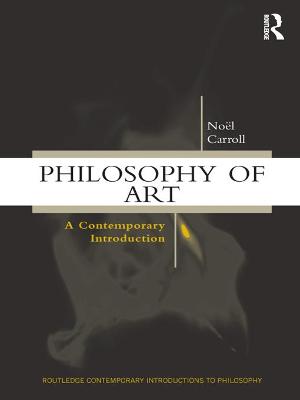Routledge Contemporary Introductions to Philosophy
2 total works
It introduces the techniques of analytic philosophy as well as key topics such as the representational theory of art, formalism, neo-formalism, aesthetic theories of art, neo-Wittgensteinism, the Institutional Theory of Art. as well as historical approaches to the nature of art.
Throughout, abstract philosophical theories are illustrated by examples of both traditional and contemporary art including frequent reference to the avant-garde in this way enriching the readers understanding of art theory as well as the appreciation of art.
Unique features of the textbook are:
* chapter summaries
* summaries of major theories of art and suggested analyses of the important categories used when talking and thinking of art
* annotated suggested readings at the ends of chapters.
Also available in this series:
Epistemology Pb: 0-415-13043-3: GBP12.99
Ethics Pb: 0-415-15625-4: GBP11.99
Metaphysics Pb: 0-415-14034-X: GBP12.99
Philosophy of Mind Pb: 0-415-13060-3: GBP11.99
Philosophy of Religion Pb: 0-415-13214-2: GBP12.99
Interest in aesthetics has grown steadily over the last three decades, with accompanying philosophical attention paid to the individual arts and the unique philosophical problems each presents. Literature is no exception in this respect, as philosophyers have explored representation, emotion, imagination and other issues germane to aesthetics within a specifically literary context.
In this new volume in the RCIP series, John Gibson provides a comprehensive, cutting-edge primer for undergraduates on the philosophy of literature. Gibson synthesizes age old questions and the latest research in aesthetics (including that from cognitive science) as they apply to poetry, drama, fiction, and even comics. Philosophy of Literature: A Contemporary Introduction covers the full range and diversity of its subject, offering clear explanations for both philosophy and literature undergraduate and graduate students. It draws primarily on the contributions of philosophers in the Anglo-American tradition, though it doesn't shy away from important questions raised in Continental philosophy and by literary theorists. While the book is an introductory overview, its chapters and especially its conclusion make a strong case for the importance and broad relevance of philosophical aesthetics to those who are bewildered by its methods or mistakenly suspicious of its value.

